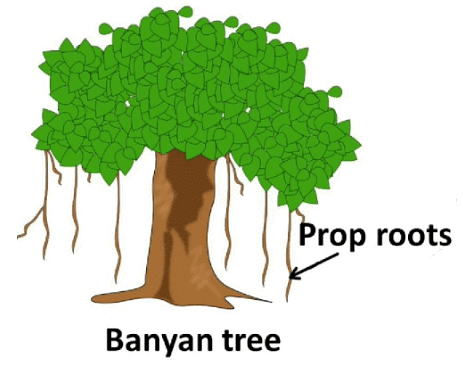ACT Exam > ACT Notes > Biology for ACT > Glossary: Morphology of Flowering Plants
Glossary: Morphology of Flowering Plants | Biology for ACT PDF Download
Morphology
- Morphology: The study of various external features, forms and relative position of different organs of the organism is known as morphology. It may be further divided into internal and external morphology.
The Root
- The Root: The root is underground part of the plant and develops from elongation of radicle of the embryo.
- Primary Root: In majority of the dicotyledonous plants, the direct elongation of the radicle leads to the formation of primary root which grows inside the soil.
- Tap Root: The primary roots and its branches constitute the tap root system.
- Fibrous Root: These roots originate from the base of the stem and constitute the fibrous root system.
- Adventitious Roots: In some plants, like grass, Monstera and the banyan tree, roots arise from parts of the plant other than the radicle and are called adventitious roots.

- Root Cap: The root is covered at the apex by a thimble-like structure called the root cap.

The document Glossary: Morphology of Flowering Plants | Biology for ACT is a part of the ACT Course Biology for ACT.
All you need of ACT at this link: ACT
|
226 videos|247 docs|150 tests
|
FAQs on Glossary: Morphology of Flowering Plants - Biology for ACT
| 1. What is the definition of morphology in the context of flowering plants? |  |
Ans. Morphology refers to the study of the form and structure of organisms. In the case of flowering plants, morphology focuses on understanding the various parts and their arrangement, such as roots, stems, leaves, flowers, and fruits.
| 2. What are the main components of a flowering plant's morphology? |  |
Ans. The main components of a flowering plant's morphology include roots, stems, leaves, flowers, and fruits. Roots anchor the plant and absorb water and nutrients from the soil. Stems provide support, transport water and nutrients, and bear leaves and flowers. Leaves are responsible for photosynthesis. Flowers are the reproductive structures of the plant, while fruits develop from flowers and contain seeds.
| 3. How do the morphology and structure of flowers vary among different plant species? |  |
Ans. The morphology and structure of flowers can vary significantly among different plant species. Flowers can differ in size, shape, color, arrangement, and the number and arrangement of their reproductive organs. Some plants have solitary flowers, while others have inflorescences with multiple flowers. The diverse characteristics of flowers often play a crucial role in attracting pollinators and promoting successful reproduction.
| 4. What is the role of morphology in the classification and identification of flowering plants? |  |
Ans. Morphology plays a fundamental role in the classification and identification of flowering plants. By studying the form and structure of plants, scientists can categorize them into different families, genera, and species. Morphological characteristics such as the shape of leaves, arrangement of petals, presence of specific structures, and other observable features help in distinguishing and classifying plants. This information is essential for botanical research, conservation efforts, and understanding plant diversity.
| 5. How does understanding the morphology of flowering plants benefit horticulture and gardening? |  |
Ans. Understanding the morphology of flowering plants is highly beneficial in horticulture and gardening. By knowing the specific requirements of different plant parts, such as roots, stems, leaves, flowers, and fruits, gardeners can provide optimal care and create suitable growing conditions. Knowledge of morphology also aids in plant propagation techniques, selection of appropriate cultivars, and designing aesthetically pleasing gardens. Additionally, understanding the morphology of flowers helps in cross-pollination and the development of new plant varieties.
Related Searches
















